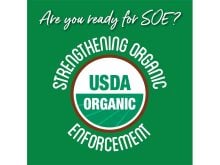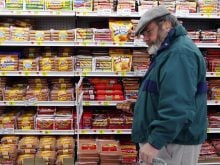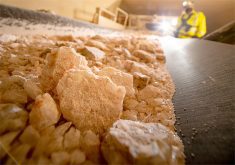REUTERS — Newly inaugurated U.S. President Donald Trump is pushing to “take back” the Panama Canal, the world’s second busiest interoceanic waterway, spurring concerns that the United States could invade the Central American nation.
Trump argues that Panama has broken a pledge of neutrality made when the United States transferred the canal to Panama in 1999, falsely claiming that China is operating it.
The canal is operated by the Panama Canal Authority, an autonomous agency overseen by the Panamanian government.
Read Also

New coal mine proposal met with old concerns
A smaller version of the previously rejected Grassy Mountain coal mine project in Crowsnest Pass is back on the table, and the Livingstone Landowners Group continues to voice concerns about the environmental risks.
It is an 82 kilometre artificial waterway that connects the Pacific and Atlantic oceans and key to global trade flows. It saves ships thousands of kilometres and weeks of travel. Before it was built, ships had to make the long journey around the stormy tip of South America in order to travel by sea between the two oceans.
Over two-thirds of all cargo passing through the canal today originates from or is destined for the United States.
The U.S. completed construction of the canal in the early 20th century, a project begun by France that claimed the lives of more than 25,000 workers.
Following pressure from anti-colonial movements, the U.S. signed treaties in 1977 granting Panama control and sovereignty over the canal zone and guaranteeing its permanent neutrality. These took effect in 1999.
An amendment to one of the treaties indicates that the “correct interpretation” of the treaty obligations requires Panama and the U.S. to “defend the canal against any threat to the regime of neutrality.”
Permitted action under the treaty includes taking “unilateral” actions to defend the canal against any threat as defined by either nation, according to the 48-year-old accord.
However, the treaty’s language also prohibits some U.S. actions.
“This does not mean, nor shall it be interpreted as, a right of intervention of the United States in the internal affairs of Panama,” according to the text, adding that any U.S. action must ensure that the waterway remains “open, secure and accessible.”
Over the past couple years, a severe drought aggravated by climate change lowered water levels at lakes feeding the canal, forcing restrictions on transits and vessel drafts and raising costs and waiting times.
The passage restrictions were lifted late last year, but the waterway has not yet seen normal traffic return as many shippers, especially bulk carriers and liquefied natural gas tankers, have continued taking alternative routes.
In his inaugural address, Trump repeated claims that Panama has ceded control of the canal to China. He has also said Chinese troops are stationed at the canal, without providing evidence.
Both Panama’s government and the Chinese government reject those assertions.
CK Hutchison Holdings, a Hong Kong-based company, has for more than two decades operated the ports of Balboa and Cristobal at the canal’s Pacific and Atlantic entrances. The publicly listed company is not financially tied to the Chinese government, though Hong Kong firms are subject to state oversight.
Other ports are operated by firms from the U.S., Taiwan and Singapore.
China’s economic influence has been growing in Latin America, fueling worries in Washington that the resource-rich region will tilt to Chinese interests rather than those of the United States.
Panamanian president Jose Raul Mulino has asserted that the canal is and will continue to be Panamanian.
Panama’s authorities recently announced an audit on CK Hutchison’s operated ports, saying they are investigating the firm’s compliance with concession agreements.
CK Hutchison’s local arm said in a statement it has paid the state hundreds of millions of dollars during its concession and that its labour force is 99.9 per cent Panamanian.
Trump has repeatedly complained that the fees charged to ships to use the canal are too high and has accused Panama of levying unfair tariffs on U.S. goods.
“American ships are being severely overcharged and not treated fairly in any way and that includes the United States Navy,” Trump said in the address.
Between the fiscal years ended in 2020 and 2023, the canal’s toll revenue increased almost 26 per cent to US$3.35 billion. In the fiscal year ended last September, the canal offset less vessel traffic with a water surcharge, which it combined with slot auctions that rose to as much as $4 million per vessel.
The canal’s fees are not differentiated by a ship’s flag, country of origin or destination. The U.S. does not have a relevant commercial fleet under its flag, and U.S. military ships enjoy priority passage.
Mulino said the tariffs are carefully and transparently evaluated according to demand.
Shipping experts and cargo movers say tolling fee increases have been applied in recent years by other key waterways amid demand spikes and geopolitical conflicts.
Trump’s threat is already affecting Panama’s debt rating. U.S. investment bank JPMorgan downgraded its recommendation on the country’s bonds over threats to the canal, a key source of national income.
Immigration has been a major topic of discussion recently between the U.S. and Panama.
Mulino, who took office last year, has taken a harder line on migration than his predecessor, agreeing to U.S.-funded deportation flights from Panama and installing barbed wire at the Darien Gap, a dangerous jungle route many migrants traverse from South America on their way to the U.S. border.

















